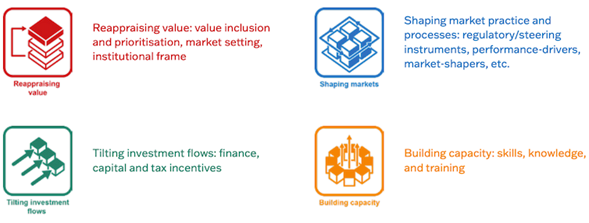Recent research conducted for the Australian Housing and Urban Research Institute (AHURI) recognises Australia’s building system is wasteful of many of its best resources. The same research suggests a circular economy approach could be the circuit breaker to tackle climate and resource challenges, at the same time as shifting to a more sustainable housing industry.
Report co-author Ralph Horne wrote in The Conversation that:
“The circular economy offers answers to the dual challenges of housing affordability and sustainability. These solutions work across households, renters and owners.”
The report recommends a strategy based on four pillars for reform leading to improved housing sector activity. The four areas of proposed reform are to:
- Assign a higher value to the sustainability of housing
- Shift market processes
- Tilt investment flows by providing incentives for circular housing designs and projects
- Build the sector’s capacities to deliver sustainable outcomes.

There are pointers to actions that need to be led by policy makers, but there is also guidance for industry. Horne writes that the analysis:
“…shows the use of concrete in housing continues to increase. This means concrete-related emissions are increasing too. Better data systems to track material flows would give us a clearer picture of where to target efforts to reduce embodied carbon in housing.”
Solutions to the problem of concrete might consider this report and determine how best to leverage it for their needs, for instance.
For those keen to learn more, the AHURI research can be found here: https://www.ahuri.edu.au/sites/default/files/documents/2023-06/AHURI-Final-Report-402-Building-materials-in-a-circular-economy.pdf
Changing the supply-side of Australian housing is a potentially daunting task. The sector is rife with vested interests, sunk capital and significant inertia, as Louise Dorignon observed in The Conversation in late July.
Demonstrating the circularity of the market – or at least the inter-relationships between supply and demand – Dorignon suggests that moving to a more efficient building system for housing could be achieved by stimulating the demand side in the right manner. Specifically, she suggests driving demand towards forms of housing that are likely to be prefabricated, a topic we explore further in the next item in this edition of StatsCount.



